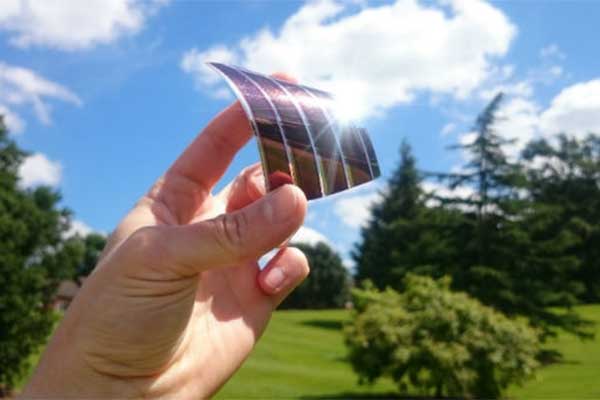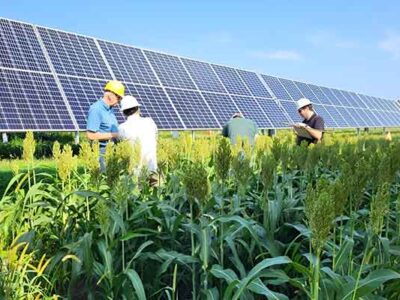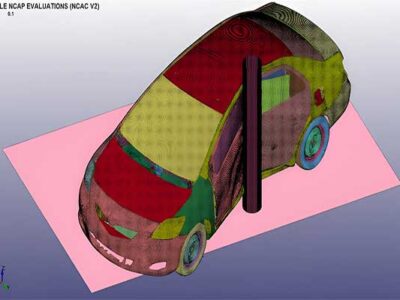Researchers at the University of Surrey have achieved record power conversion efficiencies for large area organic solar cells. In recent years scientists have been attempting to increase the efficiency of these cells to allow commercial applications such as integration into a building’s glass façade, generating electricity to power the building.
The research was led by the University of Surrey’s Advanced Technology Institute (ATI) in collaboration with Oxford University, Aristotle University of Thessaloniki (Greece), and University of Stuttgart (Germany). The project is part of SMARTONICS, a four-year European Commission FP7 programme aimed at developing large-scale pilot lines for the fabrication and printing of organic polymer solar cells.
The results, published in Advanced Electronic Materials, demonstrate that dependencies between the chemical and physical properties of the photoactive layer’s building blocks within organic solar cells determine the efficiency of these solar cells.
By using a well-known and low cost electron donating material (P3HT) in combination with an electron accepting material (ICBA) for the photosensitive layer of the organic solar cells, the research team discovered that different ICBA samples consist of dissimilar isomeric mixtures (isomers are molecules with the same number of atoms of each element, but with the atoms differently arranged).
These characteristics are critical for the formation kinetics and spatial arrangement of P3HT and ICBA in their photosensitive blend and lead to varying power conversion efficiencies.
Tailoring the fabrication process based on these findings, the research team were able to improve the efficiency of their solar cells from 2.2% up to 6.7%. This is one of the highest efficiencies to have been reported for P3HT blends on a large-area device.
Professor Ravi Silva, corresponding author and Director of the ATI commented, “Solar cells made of organic materials have a number of benefits over traditional inorganic solar cells — and more so when the organic is P3HT, the fruit fly for organic solar cells. Not only are they flexible, lightweight and environmentally-friendly, they are also design-friendly because they can be semi-transparent and printed in different colours and shapes.
In addition, in contrast to their inorganic competitors, they convert efficiently indirect sunlight, which makes them an ideal material to power devices on the move, such as for the Internet of Things. Our group is looking to expand research in this field, with more PhD students and researchers, which will have such a positive impact on society.”
PhD student Dimitar Kutsarov, the paper’s lead author, said, “The research represents a significant step forward in the understanding of the characteristics of materials with isomeric properties, which will lead to a future improvement of the efficiency of organic solar cells. We know now how important the spatial arrangement of the isomeric molecules is and will, therefore, be able to push the efficiency of P3HT-based solar cells further. Our findings will be used for the fabrication of meters long organic solar cells as part of the successful completion of the collaborative European project SMARTONICS.”
Reference(s):
Publication: Dimitar I. Kutsarov, Ilija Rašović, Alexandros Zachariadis, Argiris Laskarakis, Maria A. Lebedeva, Kyriakos Porfyrakis, Christopher A. Mills, Michail J. Beliatis, Brett Fisher, Kirsten Bruchlos, Sabine Ludwigs, Stergios Logothetidis, S. Ravi P. Silva. Achieving 6.7% Efficiency in P3HT/Indene-C70 Bisadduct Solar Cells through the Control of Vertical Volume Fraction Distribution and Optimized Regio-Isomer Ratios. Advanced Electronic Materials, 2016
Research story: University of Surrey | November 30, 2016 (source)
















Comments